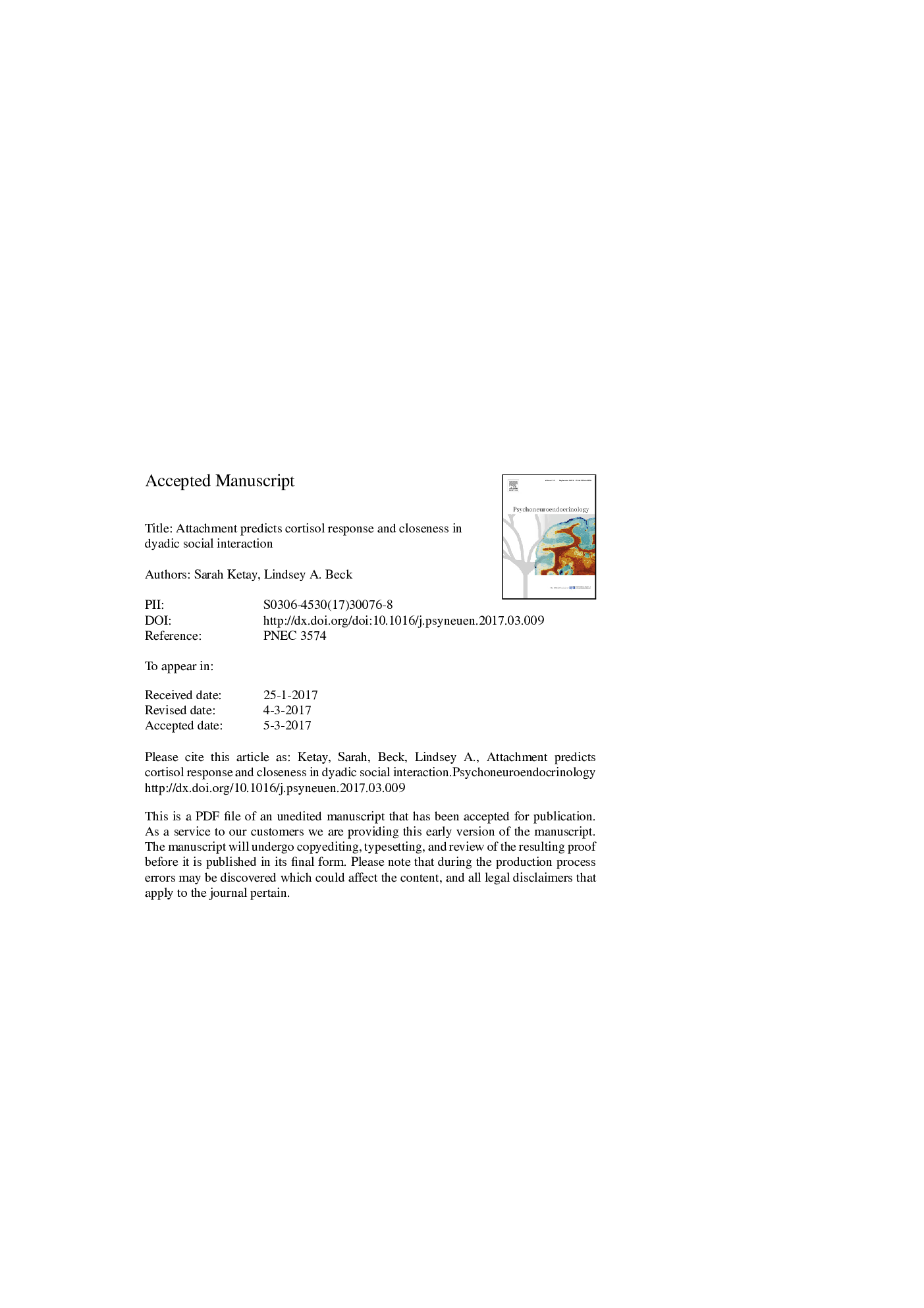| Article ID | Journal | Published Year | Pages | File Type |
|---|---|---|---|---|
| 4934458 | Psychoneuroendocrinology | 2017 | 28 Pages |
Abstract
The present study examined how the interplay of partners' attachment styles influences cortisol response, actual closeness, and desired closeness during friendship initiation. Participants provided salivary cortisol samples at four timepoints throughout either a high or low closeness task that facilitated high or low levels of self-disclosure with a potential friend (i.e., another same-sex participant). Levels of actual closeness and desired closeness following the task were measured via inclusion of other in the self. Results from multi-level modeling indicated that the interaction of both participants' attachment avoidance predicted cortisol response patterns, with participants showing the highest cortisol response when there was a mismatch between their own and their partners' attachment avoidance. Further, the interaction between both participants' attachment anxiety predicted actual closeness and desired closeness, with participants both feeling and wanting the most closeness with partners when both they and their partners were low in attachment anxiety.
Related Topics
Life Sciences
Biochemistry, Genetics and Molecular Biology
Endocrinology
Authors
Sarah Ketay, Lindsey A. Beck,
